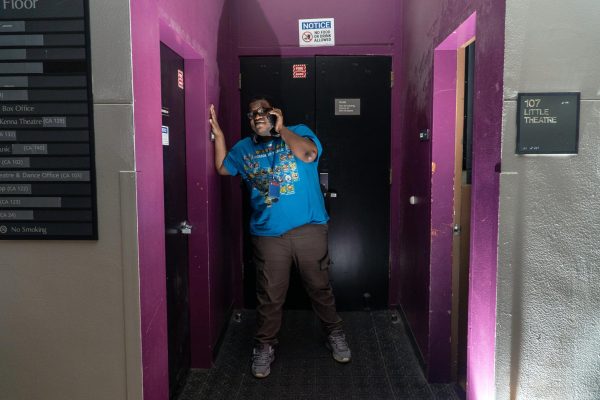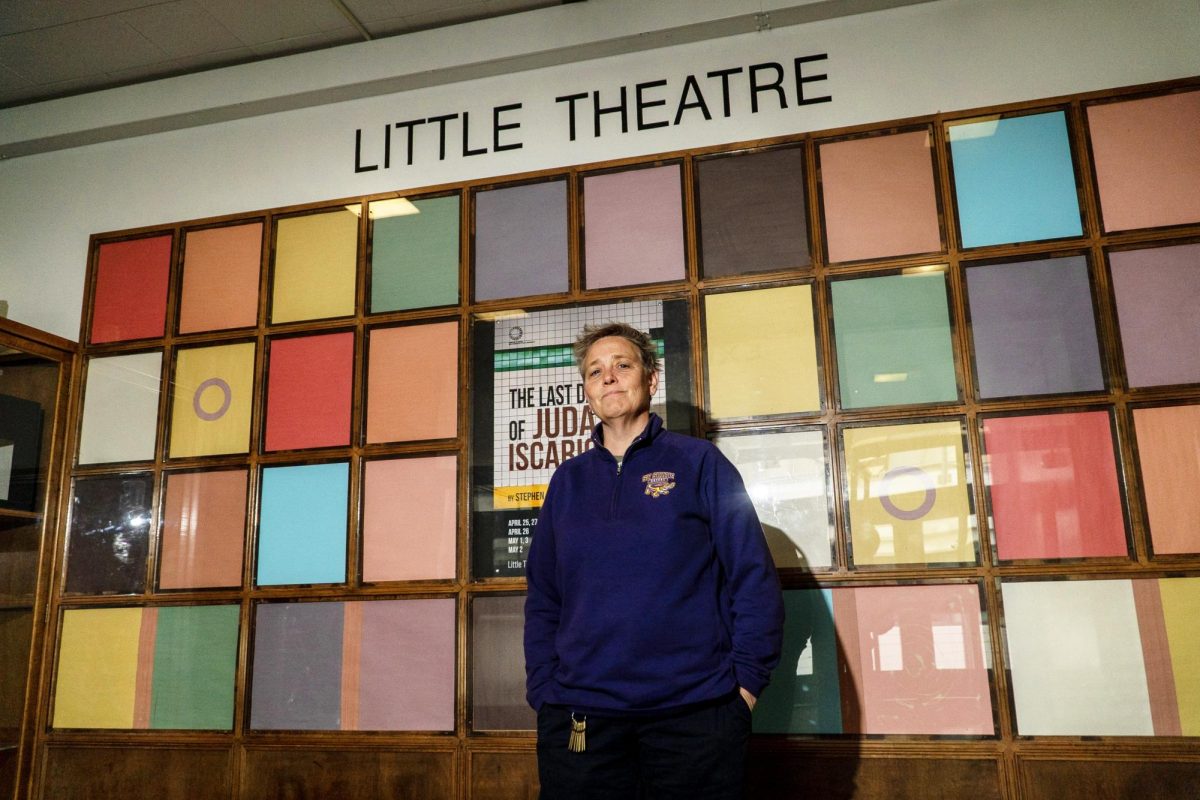To be, or not to be — that is the question San Francisco State University’s theatre department asks as its funding dwindles.
Since 2017, SF State’s School of Theatre and Dance has seen massive declines in allocated funding year after year. In less than a decade, the program has received over 75% in losses, meaning fewer professors, less equipment, fewer costumes and productions overall. With the program essentially being gutted, faculty and students have had to band together to ensure that there are still opportunities to hone their craft.
“We’ve been trying all these years to figure out ways to do more with the fewer students we had,” said School of Theatre and Dance Director Kim Schwartz. “Our goal right now is to keep going if we believe deeply in a liberal arts education.”
Jasmine Miller, who majors in dance, has noticed the losses the department has suffered since transferring to SF State in 2021.
“The amount of teachers that we had were a lot less compared to when I first transferred here,” Miller said. “And I noticed that one teacher in particular was taking over a lot of classes.”
According to data from Institutional Research, the number of students in the school has dropped dramatically over the past five years. In Fall 2019, there were 1,372 students enrolled in courses under the School of Theatre & Dance. By the Fall 2024 semester, that number had dropped to 763 — nearly half.
The number of students majoring in programs in the school has also dropped — in Fall 2019, there were 249 students in the school, compared to just 149 last semester.
With declining enrollment in the department, Schwartz and other faculty have looked for ways to accommodate more students who want to be part of productions and enroll in theatre classes.
“We’re moving some of the production classes into the core so that they’re sort of protected,” Schwartz said. “It’s really a lot harder for the dean and the provost to cancel core classes.”

One other change is the times of productions being adjusted to be more accommodating for students’ busy schedules. The Fall production of ‘Everybody’ was the first test of their matinee shows, which were part of a new set of changes being made to fit with the daily schedules of students.
“We are trying to move all of our classes, even our rehearsals, into the daytime,” Schwartz said. “We found that we had students who were never participating in a show because their family or their life obligations just didn’t allow them to be here in the evenings and on the weekends.”
The future of the program lies in the hands of students in a couple of different ways. Funding specifically for productions comes from students through Instructionally Related Activities (IRA) fees collected every semester. Since the university’s enrollment has been declining by the thousands, those fees have collected less money in the IRA pool to be spread among the school. Different programs at SF State are left to submit their arguments for why they should have their cut of the IRA money.
Before Schwartz became director of the school, she was able to get a look at what the funds looked like that would be distributed to over a dozen different projects.
“The campus itself had about $350,000 that it was able to allocate,” Schwartz said, “Now we’re down to 100 [thousand].” That has resulted in theatre and dance losing over $50,000 in funding from those fees.
As seen over the past decade, SF State theatre productions have been reduced greatly to only one major production a semester and completely halting musical theatre and large-scale dance productions.
“Because of that, there’s a lack of dance majors and because there’s a lack of dance majors, there’s not enough funding that’s being put into us as a department overall, because they don’t see high numbers,” Miller said. “We aren’t able to put on productions like our “New Moves” showcase, our university’s dance theatre showcase, which is a big, big thing for dancers, dance majors and dance minors alike.”
Students will also begin stepping into roles that were previously held by veteran theatre professionals, which gives them unique opportunities to lead their peers. Core classes in theatre and dance will require students to directly contribute to productions in order to keep them afloat.
“Right now we’re doing something called ‘Fringe’, which is basically student plays directed by and acted by students,” Schwartz said. “We’re trying to create opportunities in place of those other ones that were lost.”
Miller isn’t happy about the “opportunities.”
“It will be students as the directors — students doing lights, sounds, costumes, and makeup. It’s all going to be based on the student’s opinions,” Miller said. “The opportunity to be directed by an adult who has experience in directing, being able to perform on a stage, not just a classroom with an audience, the whole experience of going through tech rehearsals and cue to cue, and dress rehearsals — I think everyone, across the board, theater arts and dance, should have some experience with that.”
According to SF State President Lynn Mahoney, budget cuts caused by declining enrollment may affect departments around campus further.
In a campus-wide email from Mahoney, she said that further declines in enrollment at California State Universities will force them to adapt in these next pivotal years.
“Many of our departments are already engaged in the work of revising their curricula and degree programs. The Institutional Review Committee — an Academic Senate committee formed to review academic offerings — begins its work this week and will identify ways to strategically reduce costs and make sure that our academic offerings are sustainable,” Mahoney’s email said, “including integrating some programs and discontinuing others. Their work will allow us to make hard decisions transparently and based in shared governance. We are unlikely to come to a consensus on every step forward, but we can work together to understand why they are being made.”
According to JoJuan Johnson, a student double majoring in theater arts and Broadcast and Electronic Communication Arts (BECA), there’s been a decline in the number of courses overall.
“I have also been seeing a decline in the core classes in general, honestly, and the theater curriculum being shorter than expected,” Johnson said.
Johnson came to SF State to explore new opportunities and experiences. He’s been noticing a change in the number and scale of productions.
“I remember back in Spring 2023, we did a musical, “Rent,” and we haven’t been doing musicals nowadays because of how expensive it is — because we can’t. I believe we have to pay for the rights.”
With fewer productions overall in the School of Theater & Dance, students who came to SF State with aspirations to act, dance, design costumes and create sets are forced to seek out opportunities elsewhere.




